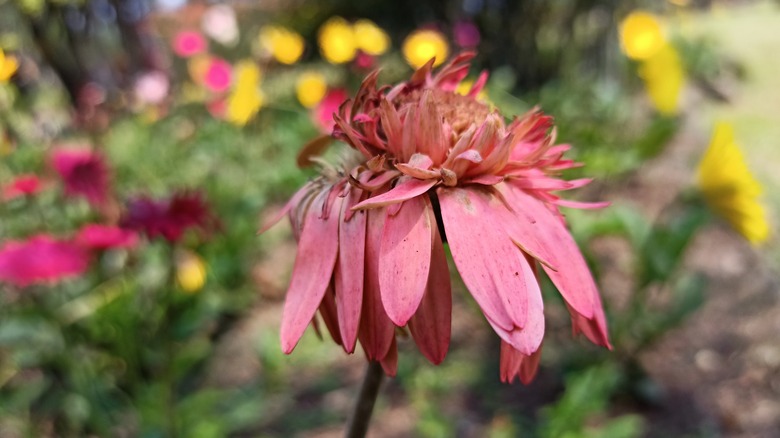Prevent Summer Heat From Ruining Your Flower Garden With These Helpful Tips
When the dog days of summer roll around, you may worry about how to help your flower garden survive during a heat wave. In times of extreme heat, particularly when temperatures are regularly above 90 degrees Fahrenheit, your plants may start to wilt or droop, and their leaves might dry out, change color, or curl. Luckily, there are several ways to help keep your flowers happy and healthy, even when the sun and heat are brutal. By watering your plants correctly, protecting them from harsh sunlight, and avoiding common gardening practices that could cause further stress, you can help your flower garden make it through the sweltering summer heat.
One of the common gardening mistakes you can make when it's super hot out is to continue fertilizing your plants. While you may be trying to help them, giving your flowers more nutrients encourages them to begin new growth. In hot weather, plants stop growing as quickly because new growth is more easily harmed by heat. Adding fertilizer in these conditions can cause extra stress for your plants. It's best to hold off on fertilizing until temperatures start dropping.
Modify your watering schedule
It may seem as though the hotter and sunnier weather is making your plants thirstier, but it's important to consider when and how you are watering your plants through a heat wave. Always check that the soil is drying out before giving your plants a drink, as they can still get too much water even during hot weather. Once it's time to water your flowers, you'll want to make sure you're doing it at an appropriate time. When temperatures are extremely high and the sun is bright, water can evaporate before it reaches your plants' roots.
You can prevent this from happening by watering your flower garden very early in the morning or in the evening once it's cooler again. Make sure that you're watering the soil beneath your plants, rather than over the leaves. This will help the liquid penetrate the dirt and reach the roots. If you believe a lack of water will harm your flowers, try placing a layer of mulch, such as wood chips, over the soil. This can help to keep the ground moist and maintain a more consistent temperature for your flowers' roots.
Provide some protection from the harsh rays and don't add stress
Besides properly watering your plants and mulching the area, giving them a little shade will help protect your flowers as well. This could be done by inserting a large umbrella into the soil, or even setting up a piece of cardboard or a bedsheet to block the sun's harsh rays. As long as you're not blocking out the airflow, a little shade can really make a difference for your flowers. You may want to remove the cover in the evening to let your plants get a little direct light, if that's what they prefer.
In some cases, it's best to avoid pruning your plants as it could be a source of more stress. But when you notice dead leaves or blooms, removing these parts can help the plant conserve energy. Propagating or transplanting your flowers during this time is also not recommended because of the added stress. Once temperatures consistently stay below 90 degrees, you can continue pruning, fertilizing, or transplanting.


